Fires devour millions of acres of forest. Sea levels rise. Cyclones flood cities, washing away roads and everything on them. And these natural phenomena are defining milestones of just the last few months.
◊
Every day, a new headline pops up about some sort of natural disaster decimating human infrastructure. In 2023 alone, raging wildfires obliterated Lahaina in Maui, torrential rains wiped out towns in India, and hurricanes struck in places never before recorded. Nature has always moved to the beat of her own drum, but the concentration of natural crises impacting people simultaneously in every corner of the planet hints that something more could be at play.
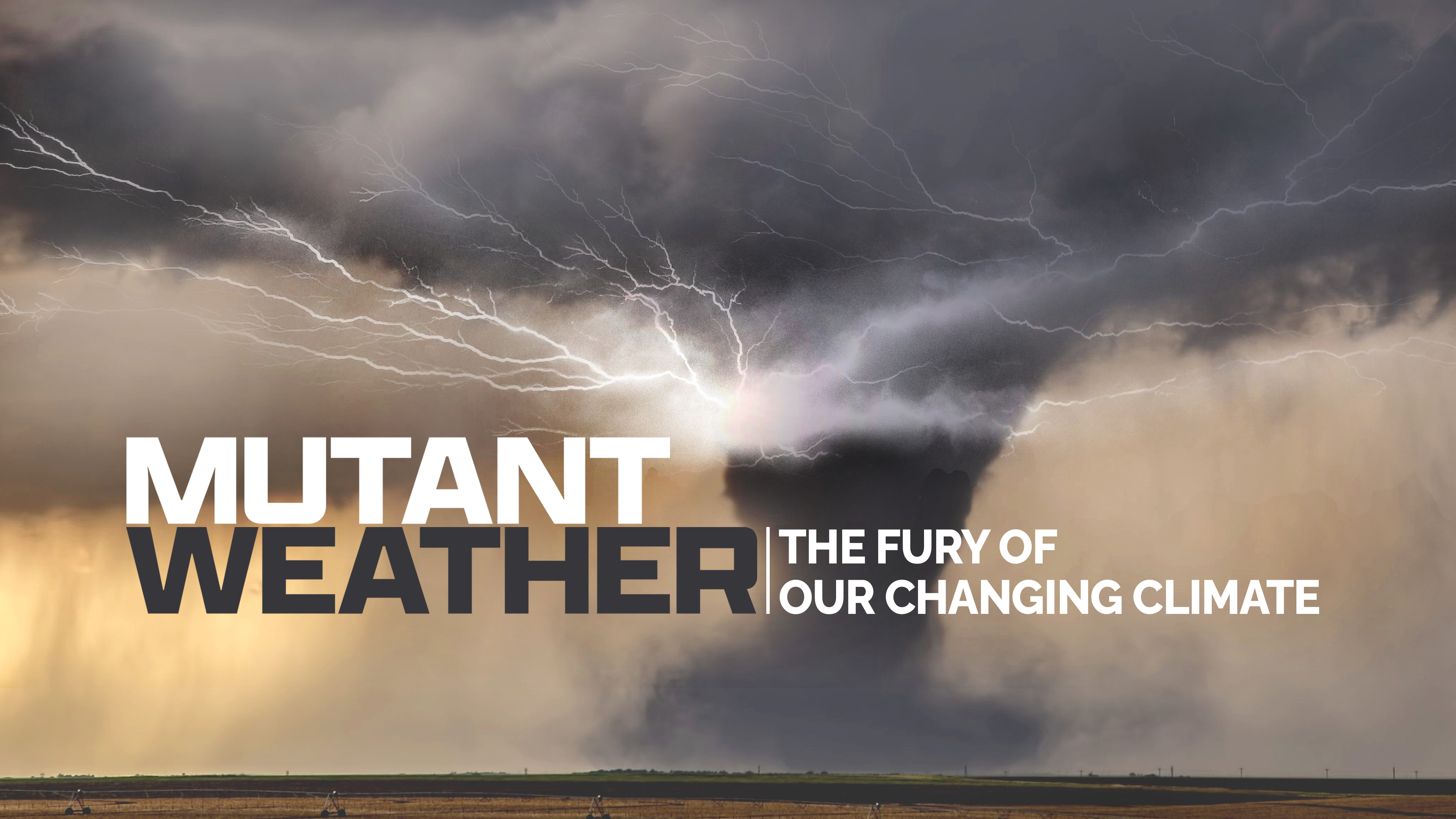
For more on the state of changing weather patterns, check out the MagellanTV series Mutant Weather.
What Prompted the Climate Crisis?
The United Nations has identified climate change as the “defining issue” of the 21st century, but its roots go back centuries. Beginning in the 1760s, the Industrial Revolution radically transformed manufacturing processes and socially reformed human behavior – and planet Earth has endured the consequences. With the advent of steam power, improved textile machinery – and, only decades later, the arrival of electrical power and telephones – the ways of commerce, communities, and even our world’s ecosystems changed drastically.
The term “Luddite” today is usually an insult knocking someone’s resistance to technology. In 19th century Britain, however, Luddites were part of a revolutionary movement opposing the brutal working conditions brought on by industrialization.
Because machinery, transportation, and communication allowed the average person to be more productive at work, many people in industrialized areas gradually experienced an uptick in economic well-being. But unfair wages cemented others in a socio-economic echelon that was difficult to escape, and opportunities remained out of reach as a wealthy elite established cultural, social, and educational institutions. The trends created during the Industrial Revolution linger today, and the effects of fossil fuel emissions disproportionately impact communities that have been historically exploited by hierarchies of industrial, political, and social power.
The Science behind the Crisis
By 1850, humans were more productive than ever before; consequently, the planet was more exploited than ever before. While the economy seemingly promised uncapped growth, fueling that growth required an equally impressive supply of, well, fuel. Coal was the most dominant form of energy, but its burning releases huge amounts of carbon into the atmosphere. Those carbon emissions form bonds with oxygen, creating carbon dioxide, a greenhouse gas that captures heat radiated by the Sun, before re-emitting its infrared energy in all directions – including back toward Earth’s surface.
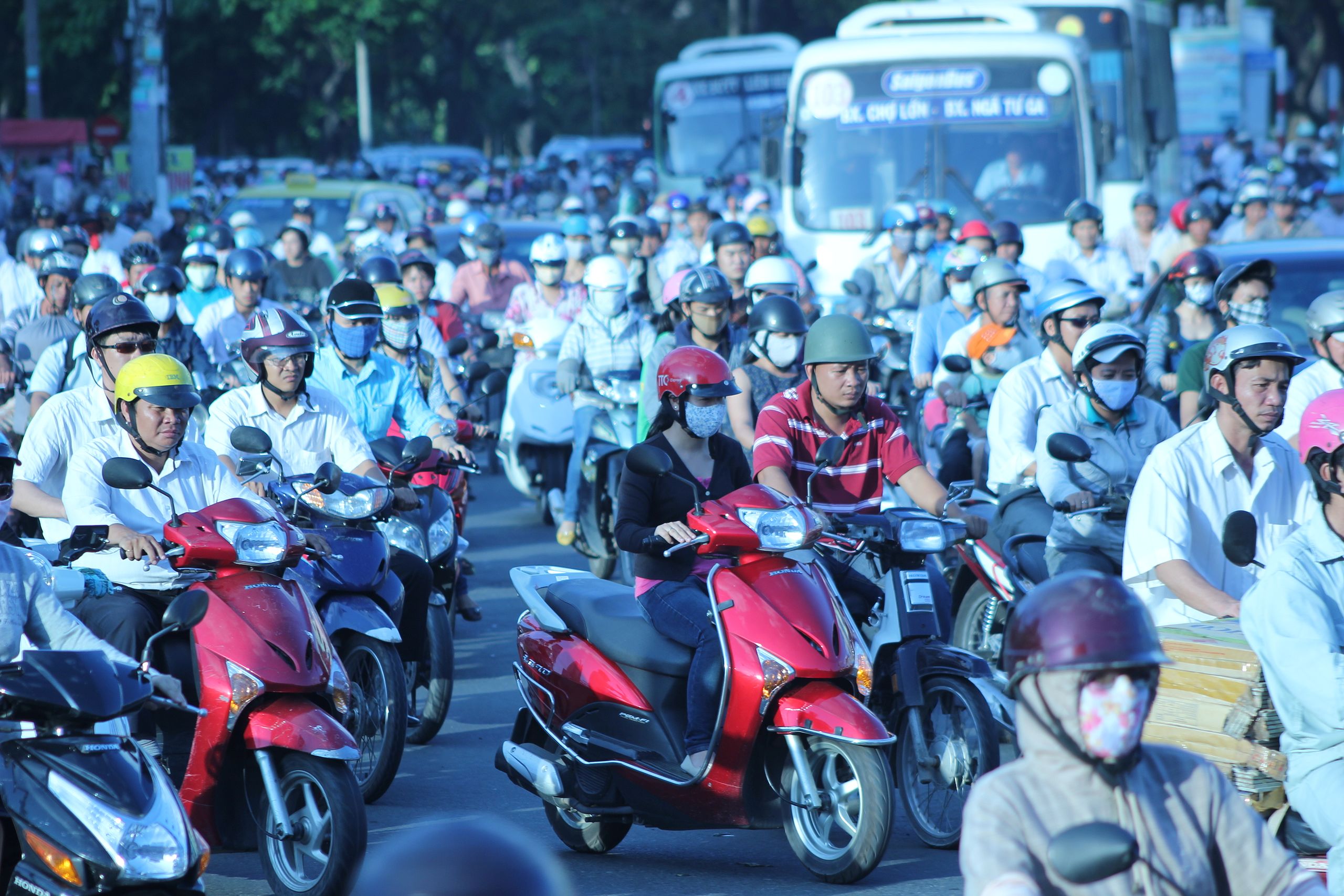
Thousands of scooters make their way through Ho Chi Minh City, Vietnam (Credit: Lars Curfs, via Wikimedia Commons)
With the inventions of steam and internal combustion engines came an asterisk: The effects of burning fossil fuels included increased air pollution levels, and, as a result, disastrous consequences for the health of humans and other species. For example, even when coal-fueled engines and facilities were just ramping up, differences in infant mortality rates between areas with little coal-burning and those where it was common indicate that poor air quality was a significant factor in the discrepancy. What they didn’t know yet was the impact of higher global temperatures.
What’s This Got To Do With The Weather Today?
According to NASA scientists’ global temperature analysis, the average global temperature on Earth has increased by at least 1.1 degrees Celsius (1.9 degrees Fahrenheit) since 1880, with the majority of the warming taking place between 1975 and the present. The rate of change has been roughly 0.15 to 0.20 degree C per decade. There are some natural fluctuations that can account for such changes in temperature, especially on a local level where seasons and unpredictable precipitation can result in stark temperature shifts; but that minimum 1.1 degree global temperature shift is too big to ignore.
The U.S. National Weather Service determines an “average” temperature over a 30-year period, and this marked shift in increased temperature over fewer than 200 years is alarming. Given previous research on the ice ages of the past, periods of extreme weather shifts could be prompted by as little as a one to five degrees Celsius temperature change over thousands of years. If the climate continues to change on its current trajectory, humans will have to adapt our farming practices, consumption habits, and lifestyle preferences to survive the impending weather changes.
More Humans Than Ever Before
The sharp increase in the human population since the 19th century reveals another feature – or consequence – of industrialization. Advances in medicine, sanitation, and nutrition led to a general uptick in life expectancy, despite the worse air quality in some areas. With that increasing life expectancy came the early signs of exponential population growth. From 1800 to 1950, the number of people on the planet increased from approximately 1 billion to 2.5 billion; today, it is around 7.8 billion, on its way to 10 billion by 2070. At this rate, the number of people depending on Earth’s finite resources may exceed the planet’s ability to sustain our global population.
Earth Overshoot Day each year is the calendar date when the human population consumes more ecological resources and services than the planet can regenerate over the course of the entire year. It took place on August 2, 2023.
Water Where It Should – and Shouldn’t – Be
From once-in-a-lifetime weather events to depletion of natural resources, all parts of planet Earth are at the mercy of the chemical changes that have been taking place in our atmosphere. Twenty-five countries, home to 25 percent of the human population, battle high water stress each year and tend to use up almost their entire available water supply. Global demand for freshwater has doubled since 1960, but the amount of water on the planet has stayed roughly the same. Between the agricultural, energy, and manufacturing industries’ demand for water, people can be left struggling to access clean water. Additionally, as a result of changing patterns of monsoons and hurricanes, water is being diverted to areas without the infrastructure to retain it and leaving other areas in a drought.
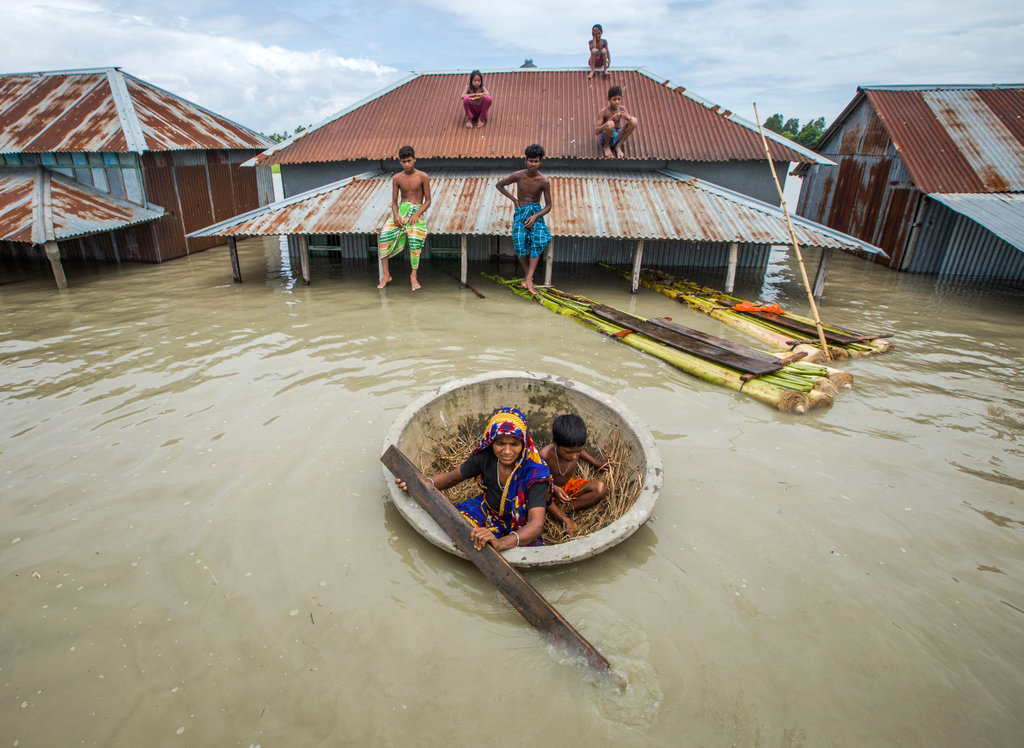
Flooding in Bangladesh in 2020 (Credit: Oregon State University, via Wikimedia Commons)
In India this year, devastating floods have killed over 100 people and displaced tens of thousands.
According to the World Bank, India’s drought-prone area has increased by 57 percent since 1997, while instances of heavy rainfall in other areas have risen by almost 85 percent since 2012. These extreme conditions affecting two separate parts of the country not only affect communities with floodwaters or other inhospitable conditions, but also wreak havoc on the country’s food supply.
Another notable weather event in 2023 was the month-long journey of tropical cyclone Freddy, which made two passes over southern Africa. Lasting 34 days, Freddy was the longest-lasting tropical cyclone on record as it ripped across Malawi, Mozambique, and Madagascar, killing 220 people. While tropical cyclones are nothing new, what was remarkable about Freddy were the intensity and duration of the storm. Scientists anticipate that rising air and ocean temperatures will increase wind speeds in tropical storms, as was seen in Freddy.
Things Are Heating Up
Both natural and man-made disasters have been affecting Earth, but more gradual temperature changes are priming the planet for disaster. The World Meteorological Organization declared the first three weeks of July to be the warmest three-week period on record, with major cities on multiple continents experiencing temperatures higher than 120 degrees Fahrenheit. Scientists credit the increased average temperature to the natural climate pattern El Niño and human-caused climate change. The sample size of recorded temperature is relatively small when compared to the history of humanity, let alone the Earth, as the consistent recording of weather only dates back to the mid-17th century. Still the trend is alarming.
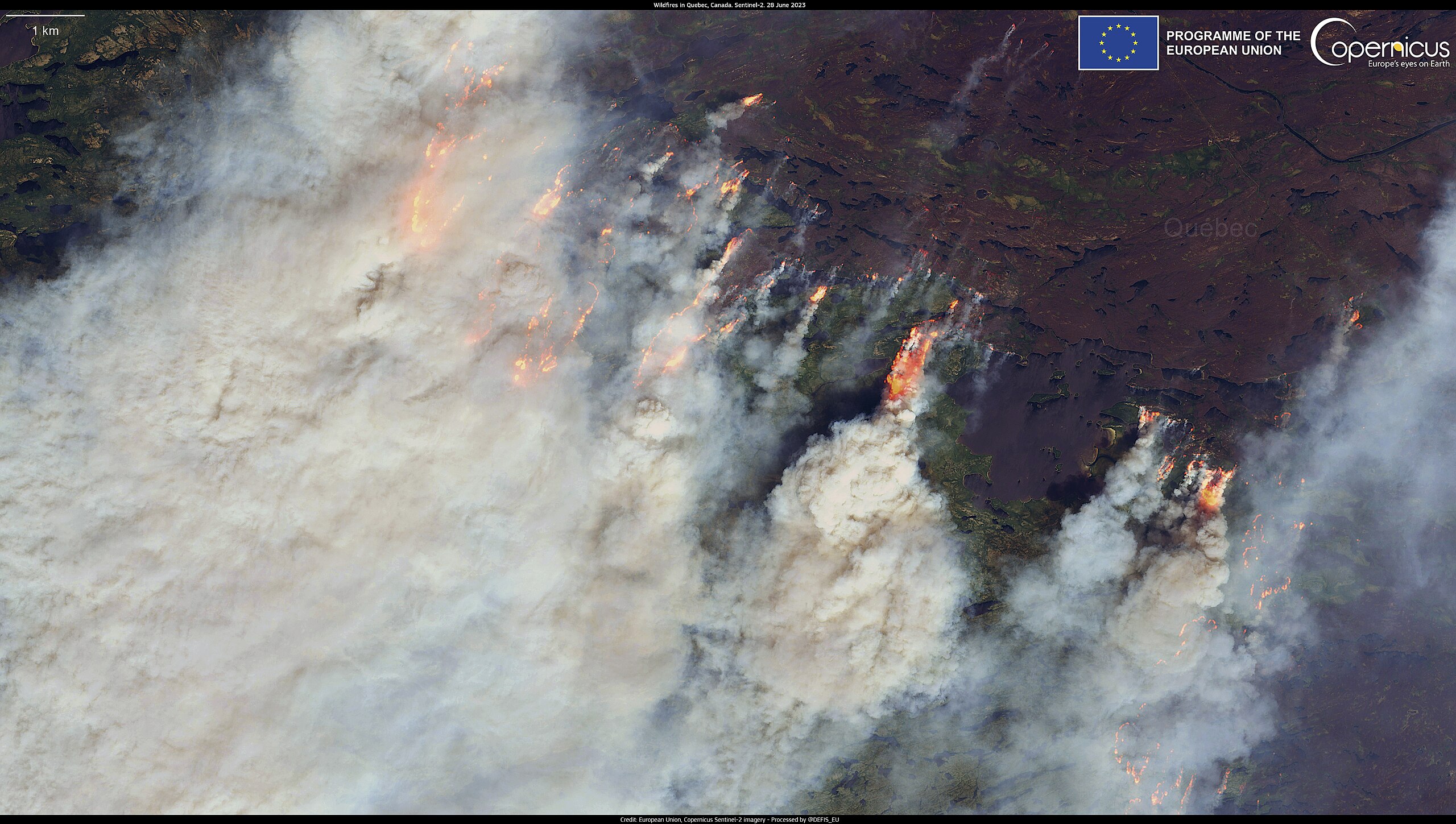
Wildfires in Canada (Credit: European Union, Copernicus Sentinel-2 imagery, via Wikimedia Commons)
Throughout this year, fires have burned over 33 million acres in Canada, with over 5,700 fires reported. The months of ongoing burning has led to air quality issues across North America, and some health agencies have cautioned people to wear masks or stay inside. With air quality levels containing a dangerously high level of pollutants, health officials were drawing parallels between walking outside and smoking a pack of cigarettes in terms of the air’s effects on lung health.
The 2023 wildfires in Canada directly affected MagellanTV’s offices, which were engulfed in thick, acrid, orange smoke that had traveled thousands of miles from the sites of the blazes.
The August 2023 fires on the Hawaiian island of Maui killed over 100 people, making it one of the deadliest wildfires in U.S. history. Reports indicate that the immediate cause of the fire was likely downed power lines. In the months before Lahaina burned to the ground, the island had been experiencing a two-category increase in the severity of what is known as a “flash drought.” Invasive grass species and unusually strong trade winds exacerbated by a passing hurricane made the circumstances a recipe for a disaster.
What Happens Next?
Climate change isn’t to blame for every weather event that causes damage or takes lives. Earth existed for 800 million years before life emerged. Humans’ ancestors, hominoids, roamed the planet about 4.4 million years ago. Throughout all of that, Earth has whipped up storms, shaken its tectonic plates, and expelled rivers of volcanic lava without regard for life, culture, or whatever else might be in the way. While climate change can’t be blamed for every natural disaster, the frequency and magnitude of destructive events linked to a warming planet are undeniably on the rise.
In 2023, some natural disasters with no apparent link to climate change caused mass carnage and destruction. A 7.8 magnitude earthquake rocked parts of Turkey and Syria, and as many as 50,000 people lost their lives trapped in collapsed buildings or buried under debris. Conflagrations in Greece – the European Union’s largest recorded series of fires – have killed dozens and set 300 square miles ablaze. An investigation revealed that the fires were started by an arsonist.
The Solution is a Marathon, Not a Sprint
With all the environmental chaos and destruction that might loom just a little farther down the road, we can focus our effort on not adding more fire to the flames – literally. Clearing brush, minimizing soil erosion by cultivating native vegetation, and being thoughtful about our resource consumption are all small steps that, when taken by many, can have a big impact. There are also steps we can take to prepare the infrastructure we value and to work with the ecosystems we depend upon, so that not every weather event is disastrous.
While starting fires is criminal and quite consciously damaging to humanity and the planet, natural disasters themselves are not new to us. Earthquakes, hurricanes, and floods are a part of our experience of being Earth-dwellers. If humans can restrict our impact by reacting responsibly to natural disasters rather than causing them, there’s a chance we can offset some of the predicted damage to our home planet.
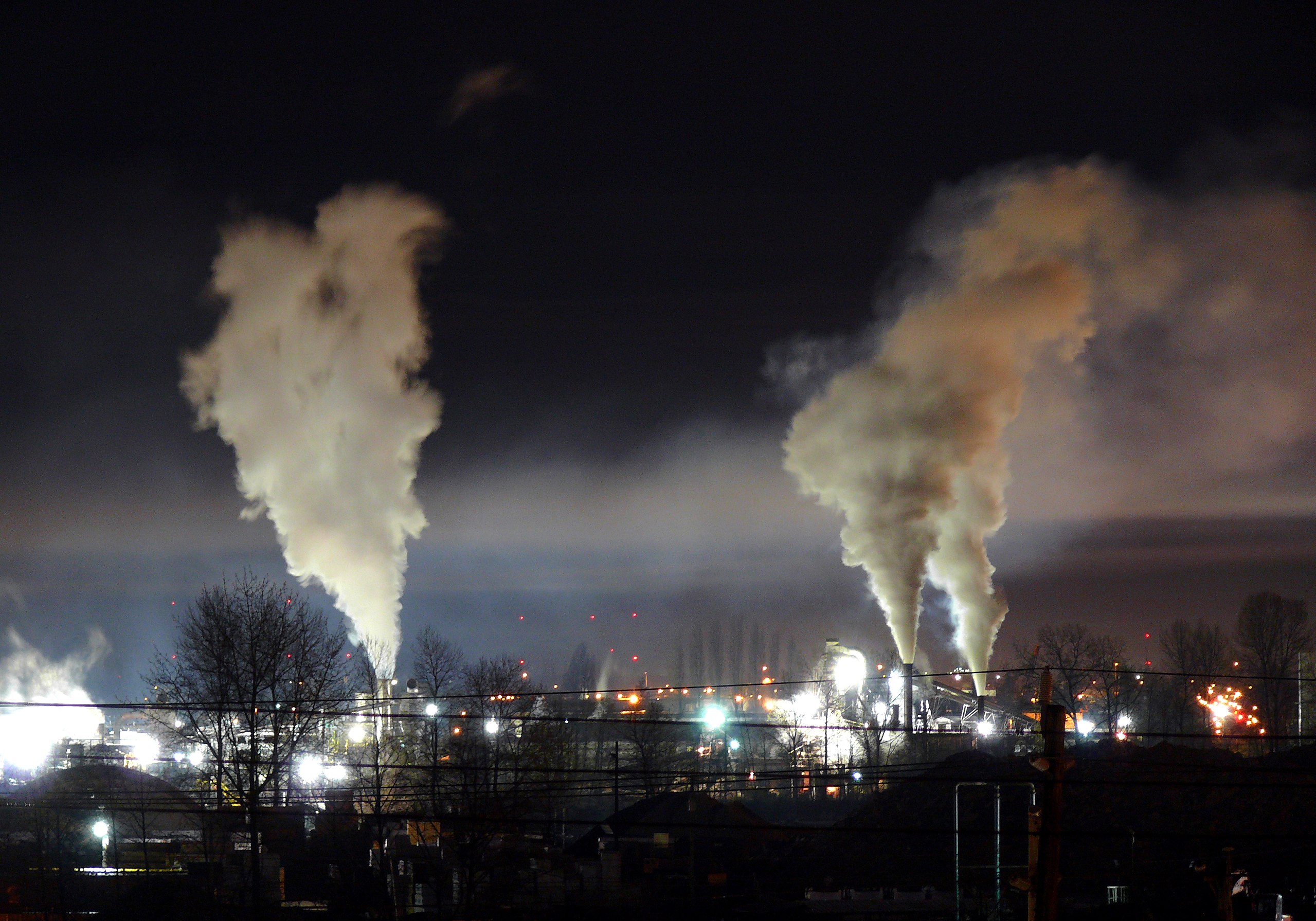
Heavy industrial light pollution at night in Richmond, British Columbia (Credit: Uxud, via Wikimedia Commons)
Perhaps the question to ask isn’t whether the climate crisis has arrived, but what we can do about it. This must not be the beginning of the end of humanity or Earth as we’ve known it; it has to be the start of a new phase. Rather than mindlessly tossing our recyclables or zipping past mass transit vehicles in our fuel-guzzling cars, perhaps we could think about the consequences of our old habits and how they add up. Nature surely affects humans, but we have the power to affect it as well – positively and sustainably.
As the saying goes, “With great power comes great responsibility.” Both nature and human beings have great power, but only humans have the agency to consider our responsibility.
Ω
Daisy Dow is a contributing writer for MagellanTV. She also writes for Local Life magazine. Originally from Georgia, she went to college to study philosophy and studio art. She now works in Chicago as a media relations coordinator.
Title Image: Lahaina, Maui, burning during the night of August 8, 2023, as seen from Wailea (Credit: Wtp22, via Wikimedia Commons)

